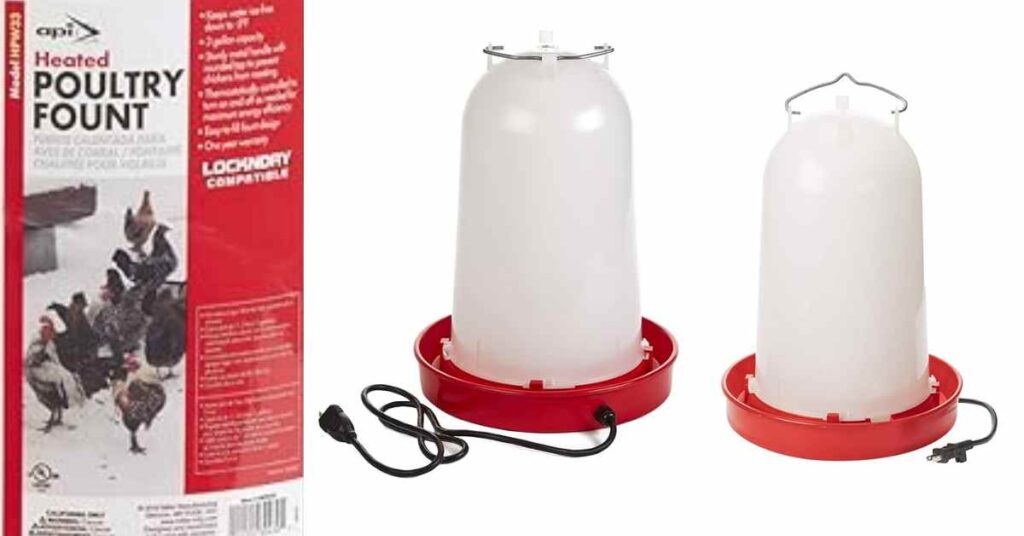Egg Incubator Best Practices: Maximizing Hatch Rates
Table of Contents
1. Introduction

Welcome to the fascinating world of egg incubators, where the miracle of life begins in the palm of your hands. In this article, we delve into the art of hatching with a focus on demystifying egg incubators.
Whether you’re a seasoned poultry enthusiast or a curious beginner, our concise guide will navigate you through choosing the right incubator, creating the perfect environment, and mastering advanced techniques.
Join us as we crack open the secrets behind successful egg incubation, ensuring you embark on a journey that’s both educational and rewarding. Let’s hatch the possibilities together!
2. Choosing the Right Incubator
When it comes to egg incubation, selecting the right incubator is paramount for a successful hatching experience. Let’s explore the diverse range of incubators available in the market and understand the key factors to consider.
2.1 Review of Popular Incubator Models
We begin our journey by spotlighting some of the prominent incubator models that have earned acclaim in the poultry community:
Rcom Mini Pro Incubator (Automatic):
- Notable for its automated features, this model streamlines the incubation process.
- Built-in candlers enhance visibility during development.
Brinsea Mini II Eco Incubator (Manual):
- A manual option offering hands-on control for enthusiasts who prefer a more involved approach.
- Known for its simplicity and reliability.
River Systems ET 12 Incubator (Semi-Auto):
- Strikes a balance between manual and automatic with semi-automated functions.
- Suitable for those seeking a middle ground in terms of control.
2.2 Comparison of Automatic, Manual, and Semi-Automatic Models
Understanding the differences between automatic, manual, and semi-automatic incubators is crucial for making an informed choice:
Automatic Incubators:
- Ideal for beginners, as they manage temperature, humidity, and egg turning automatically.
- Models like Rcom 10 PRO and Brinsea Maxi II Advance fall into this category.
Manual Incubators:
- Suited for enthusiasts who prefer hands-on control.
- Brinsea Mini II Eco stands out for its manual operation, allowing users to fine-tune settings.
Semi-Automatic Incubators:
- Perfect for those who want some automation without relinquishing control entirely.
- River Systems ET 24 is an example, offering a balanced approach to incubation.
2.3 Considerations When Choosing an Incubator
Factors to consider when selecting an incubator include:
• Capacity:
- Choose an incubator based on the number of eggs you plan to hatch.
• Features:
- Assess features like temperature control precision, humidity regulation, and ease of use.
• Budget:
- Determine a budget that aligns with your needs and preferences.
• Experience Level:
- Beginners might opt for automatic models, while experienced breeders may prefer more manual control.
Armed with insights into various models and considerations, you’re now equipped to choose an incubator that suits your specific requirements. In the next sections, we’ll delve deeper into the features and accessories that contribute to a successful incubation experience.
3. Key Features and Specifications
Now that we’ve explored the landscape of available incubator models, it’s time to dissect the essential features and specifications that play a crucial role in the success of your egg incubation journey.
3.1 Highlighting Essential Features
When choosing an incubator, understanding its features is pivotal. Here are key features to focus on:
Temperature Control:
Precision in maintaining the optimal temperature range is vital for successful incubation.
Automatic models like Rcom Mini Pro and Brinsea Maxi II Advance excel in temperature control.
Humidity Regulation:
Consistent humidity levels are critical for egg development.
Automatic models often come with built-in humidity regulation features.
Egg Turning Mechanism:
Regular egg turning mimics the natural nesting environment, promoting uniform development.
Automatic models, including the Rcom 10 PRO, have built-in egg turning mechanisms.
3.2 In-Depth Analysis of Digital and Automatic Controls
Understanding the control systems of incubators is essential for optimizing the hatching process:
Digital Controls:
Incubators with digital controls provide precise and easily adjustable settings.
Brinsea Mini II Advance, equipped with a digital interface, allows for accurate customization.
Automatic Controls:
Automatic models offer a hands-free experience, managing critical parameters autonomously.
River Systems ET Super 12 Digital Incubator exemplifies advanced automatic controls.
3.3 Ensuring Reliability and Consistency
Reliability is a cornerstone in the world of incubators, ensuring consistent performance throughout the incubation period:
Built-in Candlers:
Candlers are invaluable tools for monitoring embryo development.
Models like Rcom Mini Pro and Brinsea Maxi II Advance feature built-in candlers for enhanced visibility.
Alarm Systems:
Automatic models often incorporate alarms to alert users to deviations from optimal conditions.
Brinsea Mini II Advance, for instance, includes an alarm system for added reliability.
3.4 Customization Options
Tailoring the incubation process to specific needs can be a game-changer:
Programmable Settings:
Some incubators allow users to program specific settings based on the type of eggs being incubated.
Advanced models, like Rcom 10 PRO-Plus, offer programmable options for a customized approach.
In the pursuit of mastering the art of hatching, a comprehensive understanding of these features and specifications will empower you to make an informed choice. In the next section, we’ll explore the intricacies of creating the ideal environment for successful egg incubation.
4. Creating the Ideal Environment


Having chosen the right incubator and understood its key features, the next crucial step is creating the perfect environment for successful egg incubation. Let’s dive into the factors that contribute to an ideal setting and ensure the optimal conditions for hatching.
4.1 Temperature Management
Maintaining a consistent and accurate temperature is paramount for successful incubation:
Set the Right Temperature:
Refer to the specific requirements of the eggs you’re incubating.
Automatic models like Rcom Mini Pro and Brinsea Maxi II Advance simplify this process.
Monitor Regularly:
Use the incubator’s temperature controls to monitor and adjust as needed.
Digital controls, as found in Brinsea Mini II Eco, offer precise temperature adjustments.
4.2 Humidity Regulation
Proper humidity levels are critical for the development of healthy embryos:
Understand Humidity Needs:
Different species of eggs may require varying humidity levels.
Automatic models often come equipped with humidity regulation features.
Use Water Reservoirs:
Many incubators feature water reservoirs to maintain humidity levels.
Monitor and refill as necessary, ensuring a stable environment.
4.3 Egg Turning Frequency
Replicating the natural nesting conditions involves regularly turning the eggs:
Automatic Egg Turning:
If your incubator has automatic egg turning features, take advantage of them.
Models like Rcom 10 PRO and Brinsea Maxi II Advance come with built-in egg turning mechanisms.
Manual Egg Turning:
For manual models, establish a consistent routine for turning eggs.
The Brinsea Mini II Eco, with manual controls, allows for a hands-on approach.
4.4 Proper Ventilation
Adequate ventilation is essential for a healthy incubation environment:
Follow Manufacturer Guidelines:
Adhere to the ventilation recommendations provided by the incubator’s manufacturer.
Ensure a steady exchange of fresh air without causing temperature fluctuations.
4.5 Placement and Space Utilization
Efficiently organize the incubator for optimal results:
Proper Egg Placement:
Follow guidelines on how to position eggs within the incubator.
Avoid overcrowding to allow for proper airflow.
Utilize Incubator Space:
Be mindful of space utilization to maximize the number of eggs without compromising airflow.
Consider the design and layout of the specific incubator model.
4.6 Monitoring and Adjusting
Regular monitoring and adjustments contribute to a successful incubation process:
Use Incubator Controls:
Leverage the controls provided by your incubator to monitor and make necessary adjustments.
Take advantage of alarms and notifications, if available.
Record Keeping:
Maintain a record of temperature, humidity levels, and any adjustments made.
This data helps troubleshoot issues and refine your incubation process over time.
By meticulously managing these elements, you’ll be on your way to creating the ideal environment for hatching success. In the subsequent sections, we’ll explore additional accessories, starter kits, and delve into the valuable experiences shared by our community of poultry enthusiasts.
5. Incubation Accessories and Starter Kits


To enhance your egg incubation journey and ensure a seamless hatching process, it’s essential to consider the accessories and starter kits that complement your chosen incubator. In this section, we’ll explore the key items that can contribute to a comprehensive and successful incubation setup.
5.1 Overview of Incubation Accessories
Egg Trays:
Various-sized egg trays are available to accommodate different types of eggs.
Ensure the trays fit snugly within your chosen incubator for secure placement.
Temperature and Humidity Controllers:
External controllers can provide additional precision in managing temperature and humidity.
Compatible controllers can enhance the capabilities of your incubator.
Candlers:
External candlers can supplement built-in options, offering additional visibility into the developing embryos.
Consider the size and compatibility of the candler with your incubator model.
5.2 Starter Kits for Novice Breeders
For those new to egg incubation, starter kits can simplify the process and ensure you have the essentials for a successful hatch:
Mini II Eco Starter Pack:
Tailored for beginners, this kit often includes the Brinsea Mini II Eco Incubator, egg trays, and a guide.
Provides a convenient and cost-effective way to start your incubation journey.
Mini II Advance Starter Pack:
Similar to the Eco Starter Pack but featuring the Brinsea Mini II Advance Incubator.
Offers advanced features for those looking to take the next step in their breeding endeavors.
5.3 Recommendations for a Comprehensive Setup
Consider the following tips for creating a comprehensive incubation setup:
Compatibility:
Ensure that accessories and starter kits are compatible with your chosen incubator model.
Cross-check product specifications and recommendations from the manufacturer.
Essential Extras:
Invest in additional accessories, such as hygrometers for humidity measurement, to refine your incubation process.
Explore optional items like dividers for larger incubators to organize and separate eggs.
Educational Resources:
Starter kits often come with educational materials on egg incubation.
Supplement your knowledge with guides and resources to enhance your expertise.
5.4 Advice for a Comprehensive Incubation Experience
Seek Expert Guidance:
Consult with experts or your local poultry team for personalized advice on accessories and starter kits.
Tap into the knowledge of experienced breeders to optimize your setup.
Gradual Expansion:
If you’re new to egg incubation, consider starting with a basic kit and gradually expanding your setup as you gain experience.
Learn from each hatching cycle to refine your equipment and accessories selection.
By carefully selecting accessories and starter kits that align with your incubator model and experience level, you set the stage for a successful incubation experience. In the upcoming sections, we’ll explore the valuable insights shared by our community and provide troubleshooting tips for common challenges in the egg incubation process.
6. Customer Experiences and Reviews


Harnessing the collective wisdom of our community, this section compiles insights, experiences, and reviews from poultry enthusiasts who have embarked on their egg incubation journeys. These firsthand accounts offer valuable perspectives and practical tips that can enrich your own hatching endeavors.
6.1 Testimonials on Specific Incubator Models
Let’s delve into what users are saying about specific incubator models featured in our guide:
Rcom Mini Pro Incubator (Automatic):
Users praise its user-friendly interface and built-in candlers, highlighting its efficiency.
Some note the convenience of automated features, especially for those new to incubation.
Brinsea Mini II Eco Incubator (Manual):
Enthusiasts appreciate its simplicity and manual controls, providing a hands-on experience.
Reviews often mention reliability and the ease of operation.
River Systems ET Super 12 Automatic Digital Incubator:
Users commend its advanced digital controls and automatic features.
Some highlight successful hatching experiences with a variety of poultry eggs.
6.2 General Insights and Tips
Our community shares broader insights and tips that can benefit all incubator users:
Temperature Management:
Maintaining a stable temperature is crucial, and many users stress the importance of regular monitoring.
Recommendations include using additional thermometers for cross-verification.
Humidity Challenges:
Users discuss strategies for addressing humidity challenges during incubation.
Suggestions include experimenting with water reservoir levels and incorporating hygrometers.
Egg Turning Success Stories:
Positive outcomes are shared regarding automatic egg turning features.
Users emphasize the impact of consistent turning on the uniform development of embryos.
6.3 Troubleshooting and Lessons Learned
Real-world experiences often involve overcoming challenges. Our community generously shares lessons learned and troubleshooting tips:
Power Outages and Backup Plans:
Users discuss their experiences with power outages and the importance of having backup power sources.
Suggestions include using uninterruptible power supply (UPS) systems.
Maintaining Cleanliness:
Insights are shared on maintaining a clean incubator environment.
Users stress the significance of regular cleaning to prevent contamination.
Learning from Failures:
Members of the community openly share stories of unsuccessful hatching attempts.
Lessons learned include adjusting temperature settings and closely monitoring humidity.
6.4 Community Support and Networking
The strength of our community lies in collaboration and support:
Poultry Team Assistance:
Members recommend reaching out to the poultry team for personalized advice.
The community serves as a valuable resource for troubleshooting and guidance.
Networking Opportunities:
Enthusiasts highlight the benefits of networking with fellow breeders.
Platforms for exchanging experiences and seeking advice contribute to a thriving community.
By tapping into the experiences and reviews of our community, you gain practical insights that can significantly impact the success of your egg incubation journey. In the upcoming sections, we’ll explore troubleshooting tips in more detail and provide guidance on advanced incubation techniques for those seeking to elevate their hatching skills.
7. Troubleshooting and Maintenance


As with any process, egg incubation may encounter challenges. In this section, we’ll delve into common issues reported by our community and provide troubleshooting tips to address these concerns. Additionally, we’ll discuss essential maintenance practices to ensure the longevity and efficiency of your chosen incubator.
7.1 Common Issues and Solutions
Temperature Fluctuations:
Issue: Inconsistent temperature readings or fluctuations.
Solution: Calibrate your incubator’s temperature controls regularly. Consider using additional thermometers for verification.
Humidity Imbalances:
Issue: Challenges in maintaining stable humidity levels.
Solution: Adjust water reservoir levels and monitor with hygrometers. Experiment to find the optimal humidity for your specific eggs.
Power Outages:
Issue: Disruptions due to power outages.
Solution: Invest in a reliable backup power source, such as a UPS system, to ensure continuous operation during power failures.
Failed Egg Turning:
Issue: Automatic egg turning mechanisms not functioning correctly.
Solution: Check for mechanical issues, lubricate moving parts if necessary, and ensure proper alignment. Manually turn eggs if the automatic feature fails.
7.2 Preventive Maintenance
To keep your incubator running smoothly, regular maintenance is key:
Cleaning and Sanitizing:
Regularly clean and sanitize the interior of the incubator, including trays and racks.
Use mild disinfectants to prevent bacterial contamination.
Inspecting Wiring and Components:
Periodically inspect wiring, connectors, and electronic components.
Replace any damaged parts promptly to prevent malfunctions.
Calibration Checks:
Calibrate temperature and humidity controls periodically to ensure accurate readings.
Follow the manufacturer’s guidelines for calibration procedures.
Lubrication for Mechanical Parts:
For incubators with manual components, apply lubrication to moving parts.
This ensures smooth operation and reduces wear and tear.
7.3 Troubleshooting Lessons from the Community
Our community shares valuable lessons learned from troubleshooting experiences:
Documenting Changes:
Keep a log of any adjustments or changes made during incubation.
This documentation aids in troubleshooting and refining your incubation process.
Community Support:
Engage with the community for advice and insights when facing challenges.
Others may have encountered similar issues and can offer practical solutions.
7.4 Professional Assistance
In cases where troubleshooting becomes challenging, seeking professional assistance is advisable:
Manufacturer Support:
Contact the incubator manufacturer for technical support.
They can provide guidance on specific issues and recommend solutions.
Poultry Team Consultation:
If purchased from a poultry supplier, consult with their team for assistance.
Their expertise can be invaluable in resolving complex problems.
By proactively addressing common issues and incorporating regular maintenance practices, you ensure a smooth and efficient egg incubation process. In the next section, we’ll explore advanced incubation techniques for those looking to elevate their hatching skills and achieve even greater success.
8. Advanced Incubation Techniques


For breeders aiming to take their egg incubation skills to the next level, this section delves into advanced techniques and features that can optimize the hatching process. Whether you’re seeking increased automation or aiming for precise control, these advanced strategies will elevate your incubation expertise.
8.1 Built-in Candlers and Advanced Visibility
Built-in Candlers:
Some advanced incubators come equipped with built-in candlers for enhanced visibility into the developing embryos.
Utilize this feature to monitor the progress without disturbing the incubation environment.
High-Resolution Displays:
Incubators with high-resolution digital displays provide detailed information on temperature, humidity, and turning status.
Take advantage of these displays for real-time monitoring and adjustments.
8.2 Programmable Settings for Specific Eggs
Customized Incubation Programs:
Advanced incubators often allow users to program specific settings tailored to the requirements of different types of eggs.
Explore and utilize these programmable options for a customized incubation approach.
Species-Specific Programs:
Some models offer pre-programmed settings for common poultry and game bird species.
Select the appropriate program to simplify the incubation process.
8.3 Remote Monitoring and Control
Smart Incubators:
Explore smart incubators that offer remote monitoring and control capabilities.
Monitor and adjust settings from a distance using mobile apps or online platforms.
Wi-Fi Connectivity:
Incubators with Wi-Fi connectivity enable seamless integration with smart home systems.
Receive real-time notifications and control settings remotely for added convenience.
8.4 Multi-Incubator Synchronization
Synchronized Hatching:
Advanced breeders often manage multiple incubators simultaneously.
Ensure synchronization among incubators to maintain uniform conditions for hatching.
Centralized Monitoring Systems:
Invest in centralized monitoring systems that allow oversight of multiple incubators from a single interface.
Streamline management for large-scale breeding operations.
8.5 Automated Egg Turning Enhancements
Variable Turning Intervals:
Some advanced models offer variable egg turning intervals.
Experiment with different turning frequencies to optimize hatch rates.
Precision Egg Turning Mechanisms:
Explore incubators with precision egg turning mechanisms for smoother and more controlled rotations.
This ensures optimal development without causing stress to developing embryos.
8.6 Environmental Sensors for Fine-Tuning
Advanced Environmental Sensors:
Consider incubators with advanced sensors for monitoring additional environmental parameters.
Fine-tune settings based on factors like air quality and carbon dioxide levels.
Data Logging and Analysis:
Utilize incubators that offer data logging capabilities.
Analyze historical data to identify patterns and make informed adjustments for future hatching cycles.
8.7 Continuous Learning and Adaptation
Machine Learning Algorithms:
Explore cutting-edge incubators that incorporate machine learning algorithms.
These systems continuously learn and adapt based on past incubation experiences.
Adaptive Incubation Strategies:
Implement adaptive incubation strategies based on insights gained from machine learning algorithms.
Enhance your approach over time for increasingly successful hatching outcomes.
By incorporating these advanced incubation techniques, you’ll not only achieve more precise control over the hatching process but also open up new possibilities for large-scale and highly efficient breeding operations. As you explore these advanced features, remember to document and analyze your results to refine your approach and continually improve your egg incubation expertise.
9. Community Engagement and Knowledge Sharing
In the dynamic world of egg incubation, community engagement and knowledge sharing play a pivotal role. This section emphasizes the importance of actively participating in the poultry community, both online and offline, to gain insights, share experiences, and contribute to the collective wealth of information.
9.1 Online Forums and Communities
Poultry Enthusiast Forums:
Join online forums dedicated to poultry breeding and egg incubation.
Platforms like BackyardChickens.com and PoultryKeeper.com facilitate discussions, Q&A sessions, and shared experiences.
Social Media Groups:
Engage with poultry enthusiasts on social media platforms.
Facebook groups and Instagram communities provide spaces for quick interactions and visual sharing of experiences.
9.2 Benefits of Community Engagement
Shared Experiences:
Connect with breeders who have faced similar challenges and triumphs.
Shared experiences offer practical insights and solutions.
Real-Time Support:
Seek real-time support for immediate troubleshooting.
Community members are often quick to respond to queries, providing valuable assistance.
Networking Opportunities:
Establish connections with breeders, both novices and seasoned professionals.
Networking opens doors to collaborative projects, shared resources, and potential mentorship.
9.3 Local Poultry Associations and Events
Attend Poultry Shows and Events:
Participate in local or regional poultry shows and events.
These gatherings provide opportunities to meet experts, view diverse breeds, and attend informative sessions.
Join Poultry Associations:
Become a member of local poultry associations.
These associations often organize workshops, seminars, and offer resources for breeders.
9.4 Knowledge Sharing Platforms
Contribute to Forums:
Share your experiences and insights on online forums.
Contributing to discussions fosters a sense of community and helps others learn from your journey.
Create Educational Content:
Start a blog, YouTube channel, or podcast to share your incubation experiences.
Educational content can inspire and guide both beginners and experienced breeders.
9.5 Encouraging Novice Breeders
Mentorship Programs:
Participate in or initiate mentorship programs.
Guiding novice breeders helps them navigate challenges and build confidence.
Educational Initiatives:
Collaborate with local schools or community groups for educational initiatives.
Sharing your knowledge fosters an appreciation for poultry breeding.
9.6 The Power of Shared Learning
Learn from Others’ Experiences:
Actively listen to the experiences shared by fellow breeders.
Learning from successes and failures enriches your own understanding.
Adaptation and Innovation:
Witness how others adapt to unique challenges.
Innovation often stems from shared insights and creative problem-solving.
9.7 Harnessing the Collective Wisdom
By actively engaging in the poultry community and contributing to knowledge sharing initiatives, you not only enrich your own understanding but also contribute to the collective wisdom of the breeding community. As you continue your egg incubation journey, remember that each breeder’s experience adds a valuable layer to the vast pool of knowledge that benefits enthusiasts worldwide.
10. Conclusion
In conclusion, “Egg Incubator Demystified: Mastering the Art of Hatching” invites breeders into a world of precision, care, and shared knowledge. From the critical choice of the right incubator to the intricacies of creating an ideal environment, this guide serves as a comprehensive roadmap for both novice and seasoned breeders alike.
The insights gleaned from customer experiences, troubleshooting tips, and advanced techniques underscore the dynamic nature of this endeavor. Engaging with the vibrant poultry community, both online and offline, amplifies the learning experience and contributes to a collective reservoir of wisdom.
As breeders embrace the ever-expanding journey of egg incubation, may each hatch mark a step toward mastery, and may the joy of successful hatching resound through the incubators of enthusiasts around the world. Happy hatching, and may your wings of knowledge continue to spread!
11. Frequently Asked Questions (FAQs) - Egg Incubator Demystified: Mastering the Art of Hatching
1. What factors should I consider when choosing an incubator?
Consider factors such as automation level, egg capacity, and specific features that align with your breeding goals. Evaluate the incubator’s suitability for the types of eggs you intend to hatch.
2. How crucial is temperature management in egg incubation?
Temperature management is paramount. Maintaining a stable temperature is essential for successful hatching. Regular monitoring and calibration of temperature controls contribute to a conducive environment for embryo development.
3. What role do community engagement and knowledge sharing play in egg incubation?
Active engagement in the poultry community provides a wealth of shared experiences and real-time support. Participating in forums, attending events, and contributing to knowledge-sharing platforms enriches your understanding and fosters a supportive network.
4. How can I troubleshoot common issues with my incubator?
Address issues like temperature fluctuations, humidity imbalances, and power outages promptly. Regular maintenance, such as cleaning and inspecting components, ensures the efficiency of your incubator.
5. What are the benefits of advanced incubation techniques?
Advanced techniques, such as built-in candlers, programmable settings, and remote monitoring, offer precision and automation. These features contribute to a more controlled and efficient hatching process, especially for breeders aiming for specific outcomes.
6. Should I consider joining local poultry associations?
Yes, joining local poultry associations provides access to educational resources, workshops, and networking opportunities. Attending poultry shows and events organized by these associations can further enhance your knowledge and breeding skills.
7. How can I contribute to the poultry community?
Contribute by sharing your experiences on forums, creating educational content, and participating in mentorship programs. Your insights can be invaluable to both novice and experienced breeders.
8. Is it necessary to document my incubation experiences?
Documenting your experiences is highly recommended. Keeping a log helps you track changes, learn from outcomes, and refine your incubation approach over time.
9. What should breeders consider when implementing advanced incubation techniques?
Breeders should carefully explore features such as built-in candlers, programmable settings, and smart incubators. Experiment with synchronization and automation while documenting results to optimize outcomes.
10. What is the key takeaway for breeders in the journey of mastering egg incubation?
The journey involves continuous learning, adaptation, and community collaboration. Selecting the right incubator, creating an ideal environment, and engaging with the poultry community contribute to becoming a proficient breeder. Embrace the dynamic nature of the field and enjoy the fulfilling journey of hatching!














